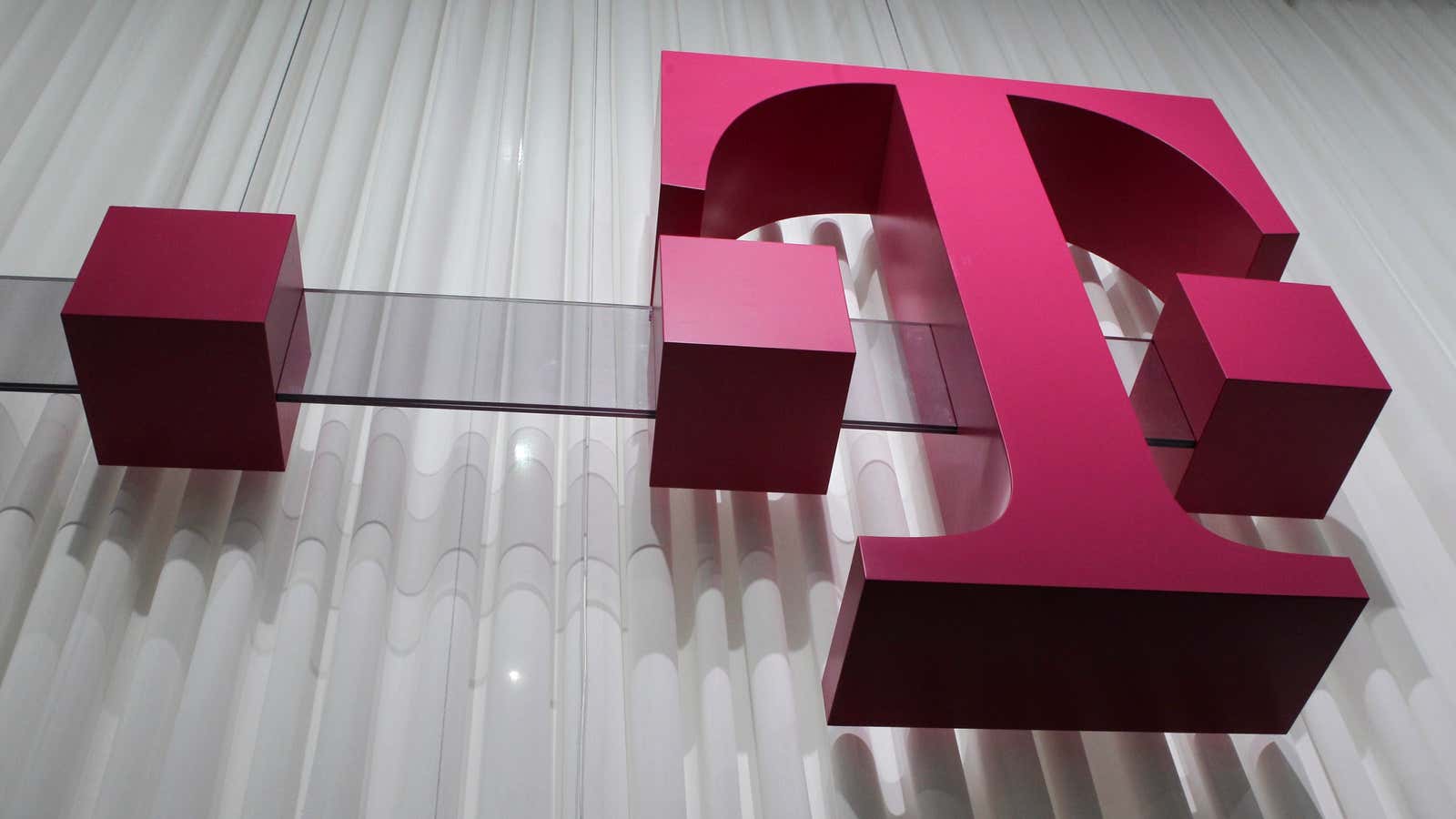Something unexpected just happened in the US: The CEO of a major mobile carrier, T-Mobile’s John Legere, announced that his company will charge full price for the iPhone when it comes to his network next year. More importantly, customers who pay $500 or more for the device will be able to choose mobile plans that don’t lock them into two-year commitments, which are typical for major US mobile carriers.
This isn’t the first time that a US carrier has offered an unsubsidized iPhone. Cricket Wireless, a subsidiary of Leap, the seventh largest mobile carrier in the US, has offered one in some coverage areas for $500 since September. But T-Mobile’s network is better than Leap’s, which is stitched together from capacity leased from other carriers, including Sprint and Clear Wireless.
The mainstreaming of prepaid and commitment-free mobile plans in the US could have far-reaching implications for Apple’s long-term market share, the future diversity of its product lineup, and the accelerating dominance of Android, but to understand why, it helps to understand how wireless markets work in the rest of the world.
India is a prime example. Data speeds are slow and dropped calls frequent, but it’s also a country in which $2 data plans are the norm. That’s because, unlike the US, which is essentially a mobile duopoly with AT&T and Verizon capturing around a hundred million subscribers each, deregulation of the telecom market in India led to fierce competition and a breathtaking diversity of competitors. Mumbai alone has 13 different mobile carriers, and each has their own physical network.
“In India, it’s fierce competition, which is why I’d love to have an Indian carrier buy up sprint or T-mobile,” entrepreneur and academic Vivek Wadhwa recently told me. “It would dramatically change the face of telephony in America. They might well do that one day.”
Aside from driving down prices, one thing competition accomplishes is diversity in pricing models. So while some consumers will balk at paying the full price of an iPhone up front—even if it saves them money in the long run—T-mobile CEO Legere also said that the company might allow users to pay them off in installments attached to a regular monthly bill. It might look exactly like a traditional carrier subsidy, but it would have the advantage of transparency.
Apple will always charge a premium for it products, but one thing that happens when customers have the option to save money by buying a device outright is that this premium becomes more apparent. If customers realize that Android handsets with features comparable to the iPhone are in fact $200 or even $300 less, it could drive Apple toward niche status.
Many of the analysts I’ve talked to have said something along the lines of “Apple is like BMW, there will always be a market for their premium goods.” But BMW doesn’t have anywhere near the market share of Apple’s iPhone. As cost-conscious consumers get access to more pricing options for both mobile computers and the connections on which they depend, it’s hard to see how that market will be good for Apple, unless the company changes its strategy.
Apple has never offered more than one model of iPhone, for example, preferring to simply sell older models at a discount. But that could change–and if it doesn’t, the company could see more and more activations of last year’s model, purchased new, and unlocked from any one particular carrier. Android devices, meanwhile, will continue to make inroads based on price alone.
